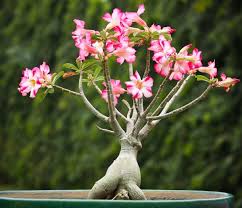
Climate change poses significant challenges to the survival and well-being of plant species worldwide, including porcelain flowers. Explore the ways in which shifting environmental conditions affect the growth, distribution, and ecological dynamics of porcelain flowers, highlighting the importance of conservation efforts in mitigating climate-related threats.
1. **Altered Growing Conditions**: Climate change is altering the environmental conditions in which porcelain flowers thrive, including temperature, precipitation patterns, and humidity levels. Rising temperatures and shifting rainfall patterns can disrupt the delicate balance of ecosystems where porcelain flowers grow, affecting their growth cycles, flowering times, and overall reproductive success. Prolonged droughts, extreme heat events, and erratic weather patterns may lead to stress-induced mortality, reduced flowering, and diminished population viability among porcelain flower species.
2. **Habitat Loss and Fragmentation**: Climate change exacerbates habitat loss and fragmentation, further threatening the survival of porcelain flowers and other plant species. As temperature and precipitation patterns shift, habitats suitable for porcelain flowers may become increasingly fragmented or degraded, leading to loss of biodiversity and reduced habitat connectivity. Fragmentation of habitat isolates populations of porcelain flowers, limiting gene flow, genetic diversity, and adaptive potential, which are crucial for their long-term resilience and survival in changing environments.
3. **Disruption of Symbiotic Relationships**: Porcelain flowers often form symbiotic relationships with pollinators, such as bees, butterflies, and moths, whose populations are also vulnerable to climate change impacts. Shifts in flowering phenology, mismatches between flowering times and pollinator activity, and changes in pollinator abundance and distribution can disrupt these vital pollination services, compromising the reproductive success and genetic diversity of porcelain flower populations. Loss of pollinators can lead to declines in fruit set, seed production, and genetic variability, reducing the resilience of porcelain flowers to environmental stressors.
4. **Increased Vulnerability to Pests and Diseases**: Climate change can exacerbate the vulnerability of porcelain flowers to pests, pathogens, and invasive species that thrive under warmer temperatures and altered environmental conditions. Pests such as aphids, mites, and scale insects may proliferate and cause damage to porcelain flower foliage and blooms, weakening plant health and reducing reproductive fitness. Additionally, climate-related stressors such as heat stress, drought, and waterlogging can weaken the immune defenses of porcelain flowers, making them more susceptible to fungal diseases, bacterial infections, and viral pathogens.
5. **Conservation and Adaptation Strategies**: To mitigate the impacts of climate change on porcelain flowers, conservation efforts are essential to protect and restore their natural habitats, enhance habitat connectivity, and promote ecosystem resilience. Conservation strategies such as habitat restoration, species reintroduction, and establishment of protected areas can help safeguard critical habitats and populations of porcelain flowers, ensuring their long-term survival in the face of climate-related threats. Additionally, research on the adaptive capacity and genetic diversity of porcelain flowers can inform conservation planning and management strategies aimed at enhancing their resilience to changing environmental conditions. By addressing the root causes of climate change and implementing proactive conservation measures, we can protect the biodiversity and ecological integrity of ecosystems where porcelain flowers play a vital role.
**Mitigation and Adaptation Strategies for Climate Change and Porcelain Flowers**
Climate change poses significant challenges to the survival and well-being of porcelain flowers, but proactive measures can help mitigate its impacts and enhance the resilience of these delicate blooms:
1. **Habitat Restoration and Protection**: Protecting and restoring natural habitats where porcelain flowers grow is essential for their long-term survival in a changing climate. Conservation efforts such as reforestation, habitat restoration, and establishment of protected areas can help preserve critical habitats and enhance habitat connectivity for porcelain flower populations. By protecting intact ecosystems and minimizing habitat fragmentation, we can create resilient landscapes that support the ecological needs of porcelain flowers and other native species.
2. **Water Conservation and Management**: Drought and water scarcity associated with climate change can stress porcelain flowers and compromise their health and survival. Implementing water conservation measures such as rainwater harvesting, drip irrigation, and soil moisture management can help mitigate the impacts of water stress on porcelain flower populations. Additionally, restoring natural hydrological processes, such as wetland restoration and riverbank stabilization, can improve water availability and habitat quality for porcelain flowers and associated wildlife.
3. **Pollinator Conservation and Management**: Protecting pollinator populations is crucial for maintaining the reproductive success and genetic diversity of porcelain flowers. Conservation efforts focused on pollinator habitat restoration, pesticide reduction, and promotion of native plant communities can help support diverse and healthy pollinator populations. Educating the public about the importance of pollinators and encouraging habitat-friendly gardening practices can also contribute to pollinator conservation efforts and enhance the resilience of porcelain flower ecosystems.
4. **Research and Monitoring**: Continued research on the ecological dynamics, population dynamics, and climate change impacts on porcelain flowers is essential for informing conservation strategies and management actions. Long-term monitoring programs that track changes in porcelain flower populations, phenology, and habitat conditions can provide valuable insights into the effects of climate change and guide adaptive management efforts. Collaborative research partnerships between scientists, conservation organizations, and local communities can facilitate data collection, knowledge sharing, and conservation planning for porcelain flowers and their habitats.
5. **Community Engagement and Education**: Engaging local communities and stakeholders in conservation efforts is critical for building support and fostering stewardship of porcelain flower habitats. Community-based conservation initiatives, educational programs, and outreach activities can raise awareness about the importance of preserving biodiversity, conserving natural resources, and mitigating climate change impacts. By empowering communities to take action and participate in conservation activities, we can build resilience and adaptive capacity to address the challenges posed by climate change and safeguard the future of porcelain flowers and their ecosystems.
In summary, addressing the impacts of climate change on porcelain flowers requires a multifaceted approach that integrates habitat conservation, water management, pollinator conservation, research, and community engagement. By implementing proactive measures and adaptive strategies, we can protect and preserve the beauty and ecological integrity of porcelain flowers for future generations to enjoy.